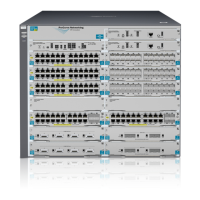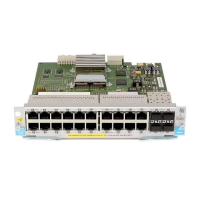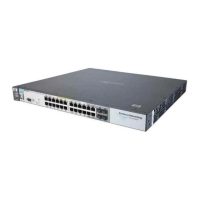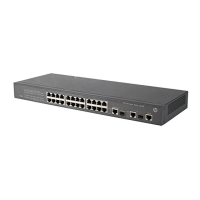7-18
QinQ (Provider Bridging)
Configuration Example
2. Reboot the box with the configuration saved to transfer into svlan bridge
mode.
3. Configure S-VLANs and customer ports connected to the customer net-
work.
4. Configure the provider ports leading to the core of the provider network.
Configure Provider Core 1 Switch. Figure 7-8 shows the configuration
details for the “Core 1” switch..
Figure 7-8. Configuration Example: Core Switch 1
To configure the Core 1 switch, you would take the following steps:
1. Enable QinQ.
Core l(config)# qinq svlan tag-type 88a8
Edge2(config)# svlan 100
Edge2(svlan-100)# untagged A1
Edge2(svlan-100)# exit
Edge2(config)# int A1 qinq port-type customer-network
Edge2(config)# svlan 200
Edge2(svlan-200)# untagged A2
Edge2(svlan-200)# exit
Edge2(config)# int A2 qinq port-type customer-network
Edge1(config)# svlan 100 tagged A3, A4
Edge1(config)# svlan 200 tagged A3, A4
Edge1(config)# interface A3,A4 qinq port-type
provider-network
100
(1 – 10);
200
(1 – 20)
A2
A3
Provider
Core 1
Switch
If ports A3 on both the provider core switches are linked
(as in this example), then the provider network can operate
spanning tree independent of the customer spanning tree.
The switch will block any redundant provider network ports
and prevents loops into a single S-VLAN.
100
(1 – 10);
200
(1 – 20)
A1
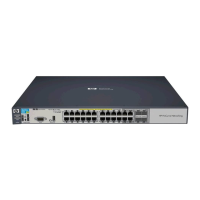
